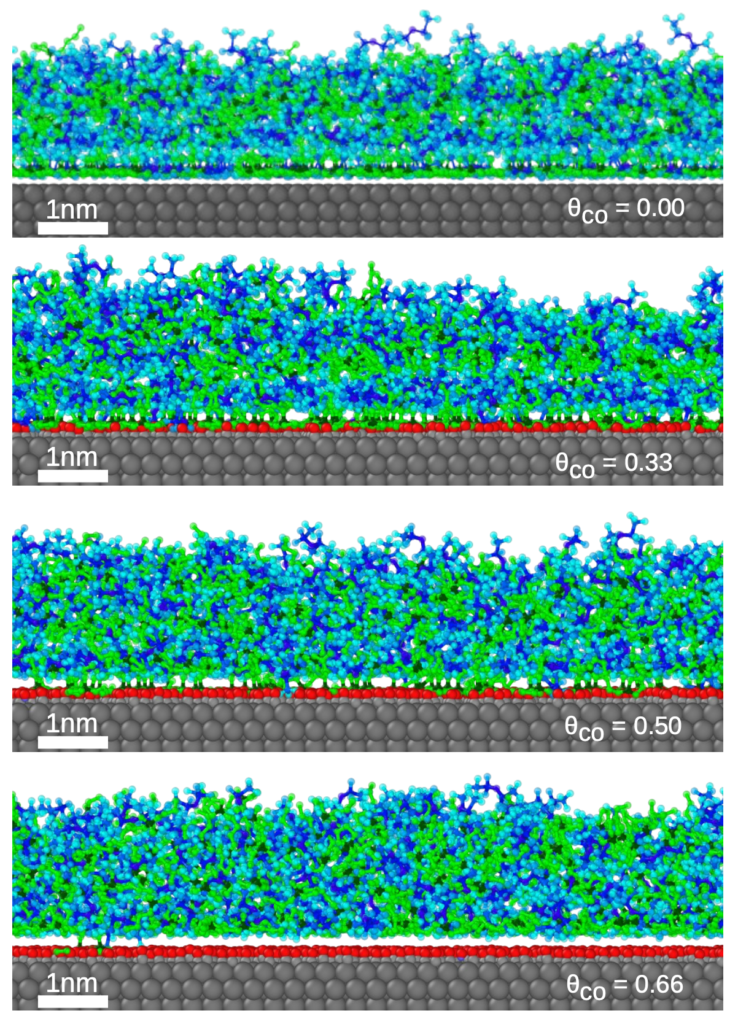HPC User Report from S. Trzeciak (Professorship of Theoretical Chemistry)
Molecular dynamics simulation of Solid Catalysts with ionic liquid layers and co-adsorbed carbon monoxide molecules
HPC User Report from S. Trzeciak (Professorship of Theoretical Chemistry)
Molecular dynamics simulation of Solid Catalysts with ionic liquid layers and co-adsorbed carbon monoxide molecules
Molecular dynamics (MD) simulations were performed for the in-depth understanding of effects that occur at the nanometer scale such as the self-organization of ionic liquid (IL) layers and the system behavior due to co-adsorption with carbon monoxide (CO) on palladium (Pd).
Solid catalysts with ionic liquid layers (SCILLs) are heterogeneous catalysts which benefit in terms of reactivity and selectivity from a thin layer of IL. The molecular and interfacial interactions of Pd(111), CO and 1-butyl-1-methylpyrrolidinium bis(trifluoromethylsulfonyl)imide [C4C1Pyr][NTf2] were studied.

A strongly bound IL wetting monolayer as the base of a potentially de-wetting multilayer was found. Conformer analyses have shown that there is a difference in adsorption motifs depending on whether the IL molecules are in the wetting layer or above it. It has also been shown that co-adsorbing CO has an effect on adsorption motifs within the co-adsorbed wetting layer. The CO permeability of a deposited IL film depends on whether a closed IL wetting monolayer is present or not.
This work will be published and two more papers being planned.
Researcher’s Bio and Affiliation
Simon Trzeciak obtained his bachelor and master degree in Chemical and Bio Engineering at Friedrich Alexander University in Erlangen (FAU). He is currently a PhD student in the group of Prof. Zahn at Theoretical Chemistry department and is a member of the Collaborative Research Center (CRC)/Sonderforschungsbereich (SFB) 1452: Catalysis at Liquid Interfaces (CLINT) at the FAU.